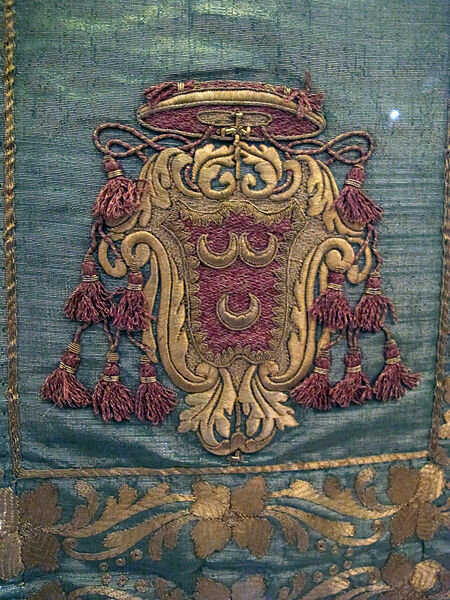
Silk - The Pride of Calabria
MÌA Magazine © Patricia Muriale
South Italy and sericulture* are hardly ever associated with one another. Most of us have never heard of the famous Calabrian Silk. It took just three generations to forget this cultural heritage that had been recognised for its quality and elegance for half a millennium.
Today only a few initiatives and cooperatives work tirelessly to bring the lost skills and knowledge back to life. But once again this knowledge remains within a small group of experts.
Therefore, we want to share with you Calabria's secret history. From forgotten centuries of glorious wealth, to what ultimately sealed its demise.
It all started in the ninth century [1], when the silk industry was introduced in Calabria by the Byzantines. They imported the silkworm and the white mulberry tree, alongside knowledge and techniques. From there on, sericulture and silk manufacture increased to the point of competing with the State of Syria. And later, with all of Europe. In the Middle Ages, Calabria was among the world's largest producers of silk.
At the center of this historic success story stood the City of Catanzaro and its surrounding areas, once counting seven thousand silk manufacturers and a thousand looms, producing the finest cloths, such as moiré, tabi, ambrosino, the catanzarito damask, and brocades.
To give you an example, the gift of marvelous green velvet panels with gold stars, which the city made to Ladislao di Durazzo in 1397, was of such merit that the king used it to upholster the throne room in Castel Capuano, in Naples.
From that moment on, the art progressed more and more to such a level of excellence that silk-fabrics were subjects in notarial deeds and testaments just after jewels, and kings encouraged it with privileges and parchments. Since silk was used as a currency, just like gold or silver, it can also be attributed to the birth of the first credit institutions within the city, linked to the noteworthy jewish community. Consequently, in 1519, Emperor Charles V granted the Consulate of the Silk Art to the city of Catanzaro, which also implied tax privileges and, until then, had only been assigned to the city of Naples.
In those days, the silk industry in Catanzaro employed large parts of the city's as well as the rural population. Most of them women. That also led to influence local attire. A traditional bride's trousseau - even for those of humble origins - was consisting mainly of silk. The velvets and damask produced here were beautiful and, above all, extraordinarily colorful[2]. Women and children would wear silk scarves and gowns to significant events and ritual passages such as baptism, marriage, and burial.
Silk - A Royal Trade
It is also notable that, already in 1470, Louis XI took the official decision to establish a silk industry in France with the aid of silk workers from Italy, including Calabrian masters. The launching of the first silk manufacture in Tours was indeed led by a craftsman from Catanzaro, Giovanni, who exported his loom; this piece of equipment is still known to these days as le métier de Jean le Calabrais. Derived from a byzantine model, this loom can be considered the progenitor of the mechanized looms. It allowed the production of excellent silk fabrics - enriched with golden and silver threads, single-colored tissues - the Gros de Tours - embroidered tissues, and also damasks. From that moment on, the silk industry took hold in France and developed in other cities in addition to Tours[3].
At the end of the seventeenth century, every single Catanzarese family of a certain rank had their dealings in the silk industry.
A sample of silk damask from 14th century Lucca
Italian Silk Damask, 1300s. The Miriam and Ira D. Wallach Division of Art, Prints and Photographs: Picture Collection, The New York Public Library. (1914 - 1915).
Chasubles in laminated Gros de Tours, embroidered with spun silver and gold - with the coat of arms of Cardinal Marcello Crescenzi from ca. 1750.
But this dream was sadly destined to end with the advent of the Spanish viceroy, whose financial policies, including heavy taxation, ended up having appalling effects on the economy of the entire region.
In the wake of technological development, in the beginning of the eighteenth century, the Calabrian silk industry saw a constant evolution with increasingly sophisticated machines: the Water Frame, the Spinning Jenny, the Spinning Mule, etc. From the wooden spinning machines to the cast-iron ones and finally to the automatic steel machines. But the ancient glory - which, for centuries, characterized the economy of Catanzaro - waned by the end of the 18th century.
While in 1863[4], throughout Calabria, hundred-twenty spinning mills were listed, the responsibility for the decline of the Calabrian silk industry lies within a sequence of events. Firstly the monopoly that the Italian government had begun to exert on it. Secondly, a shift in the market from south to north; while north Italian silk saw a renaissance, accompanied by innovation and progress, - as a consequence of imposed new regulations - this crucial step never occurred in the south, leading to a declining prestige. Finally the increasingly arduous rearing of silkworms - due to labor shortages -, various epidemics, and shocking earthquakes sealed its fate.
Now all that is left are some artifacts, preserved in the sacristies of the city’s churches. Some are of great historical and artistic value. The parading and display of those textile treasures still take place today. In some towns, the most precious damasks are laid out, on the balconies of the mansions, during processions. Nevertheless, while they are visible to all eyes, they are neither recognised nor remembered.
Today, in Tiriolo, a few kilometers from Catanzaro, one woman still weaves the typical Calabrian stole, the Vancale, using medieval techniques. Nearby in San Floro, three friends who returned to their hometown are now creating raw silk in its original manner. And in Gerace - in the region of Reggio Calabria - the textile heritage of the Magna Greca is also preserved, thanks to the efforts of a local weaver and her cooperative. Those ambitious artisans are keeping cultural heritage alive. We owe them a great deal of gratitude.
"Peasant costume from Catanzaro, Calabria."
taken from the book "Peasant Art in Italy", by Charles Holme (London: The Studio, 1913).
Footnotes:
[1] Guillou, André; Delogu, Paolo (1983). "Il mezzogiorno dai Bizantini a Federico II". Storia d'Italia (in Italian)
[2]“The colors of the Catanzaro fabrics were made with natural dyes. In particular, the light blue came from a mixture of powders called "castle"; crimson, a bright red color, was produced from kermes (a dye obtained from the drying of a type of shell, widely used by dyers from Catanzaro...). The scarlet was extracted from the madder root, which grew spontaneously in uncultivated fields. Black was obtained by creating a very dark midnight blue color or a very dark brown, made from the husk of walnuts or the "gallnut" produced by oaks. The golden yellow, also called amariglio, was produced both by boiling the yellow soil of Tropea (from which, once lightly decanted, a clarified liquid was obtained that gave the silk that wonderful gold color), and from the "yellow Tropea" herb which grew spontaneously around the Tyrrhenian town itself, in the district of the then Monteleone and near Caraffa di Catanzaro, but in the latter area with minor dyeing properties.” - Angela Rubino, Catanzaro e la Nobile arte della seta: storia di un’eccellenza da valorizzare (in Italian), 2020
[3]Angela Rubino - “Seta: da Catanzaro l’invenzione che fu alla base della gloria lionese. La storia di Jean le Calabrais”
[4]Maria Lombardo - “Eccellenze di Calabria: Quando la Seta era un Prodotto Principe” (in Italian)
Glossar
Sericulture, or silk farming, is the breeding of silkworms to produce silk
E.g. the 1783 Calabrian earthquakes (a sequence of five strong earthquakes) that hit the region of Calabria in southern Italy.
The Cholera epidemic in the 1880s fell in the time of the Calabrian diaspora.




